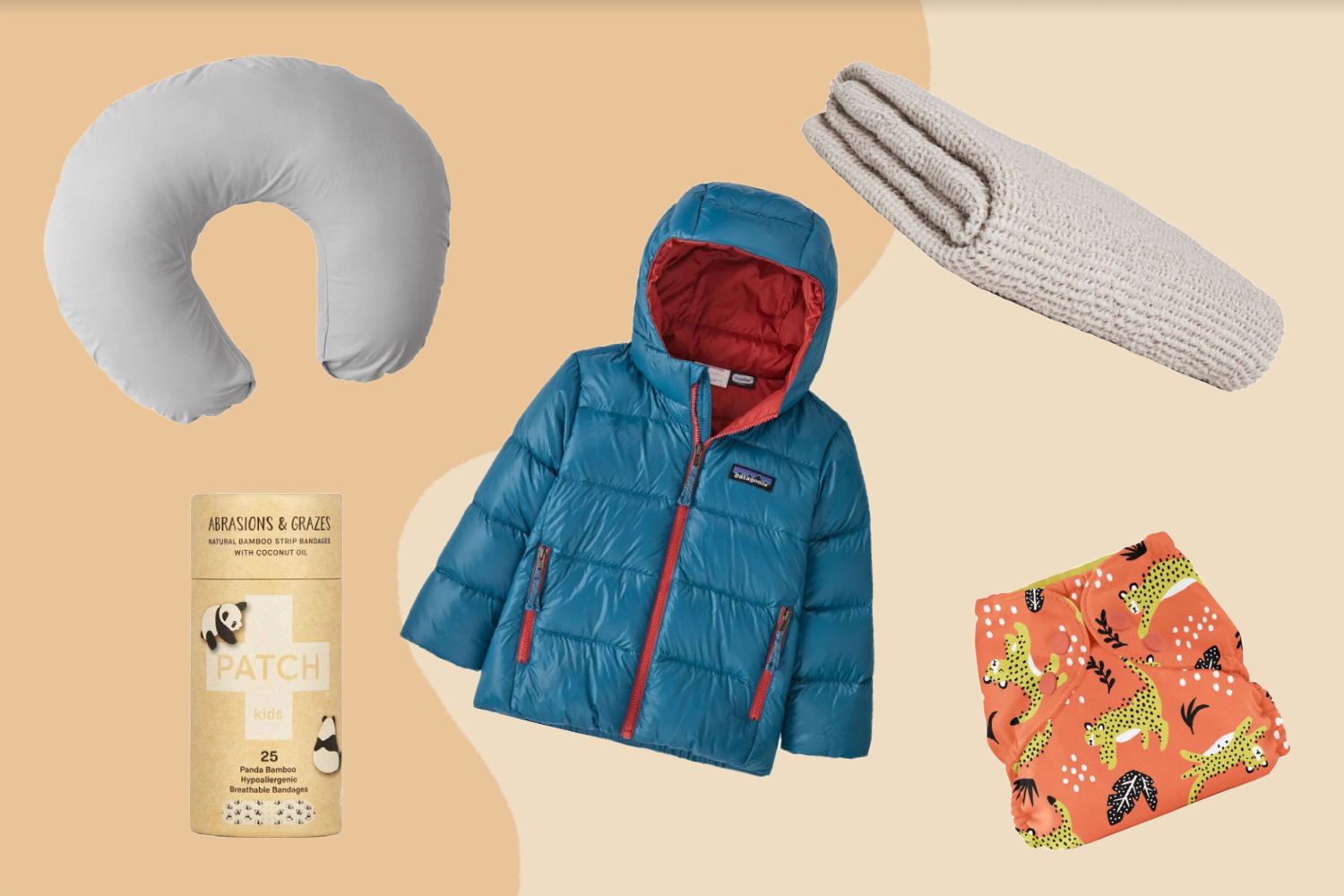The Ultimate Guide to Making Your Own Sustainable Baby Food
Learning how to make baby food isn't just beneficial for your little one—it's also good for the planet. Here's everything you should know.

Published
Baby food can be a contentious topic. From breastfeeding to formula, farm-fresh to shelf-stable, it seems that everyone has an opinion about what little ones should be eating.
Fortunately, homemade baby food seems to be a universally loved, or at least intriguing, concept—and it's trending.
Though admittedly less immediately convenient than canned or jarred options, homemade baby food is healthier, cheaper, and more sustainable. And with some foresight and planning, the DIY route can be just as simple as a spoonful of store-bought.
The History of Baby Food

Baby food as we know it didn't hit store shelves until the 1920s (think: Gerber) when marketing minds began to realize that they could sell steamed, blended, and canned ingredients for more than the price of the same food, sold fresh.
According to National Geographic, 1930 saw the Gerber plant producing 842,000 cans of baby food annually—by 1931, the number had increased to more than 2 million cans. The 1950s found commercial baby food in the cupboards of more than 90% of U.S. households, a trend that represented the era's want of modernity and abundance.
This mass market also resulted in a wealth of waste—one commonly cited 2011 study claims that the average American baby consumes 600 jars of baby food by the time they reach age one—most of which are likely still in our landfills.
Now, the homemade baby food trend that surfaced (albeit briefly) in the 1970s is back in a big way—and it comes with upsides for parents and children alike. Taking the time to steam and pureé your baby's next meal is a boon to their health, your wallet, and the planet.
Here, three benefits of homemade baby food.
The Benefits of Homemade Baby Food

1. More Nutritious
Making your own baby food allows you to control exactly what goes into your little one's little body. This means the freedom to prioritize local and organic ingredients, determine sugar and salt content—and ditch any additives, questionable chemicals, and preservatives—and even introduce new flavors to baby's growing palate.
2. More Affordable
The average jar of baby food costs around $1—and if you're going the all-natural route, the cost increases. Whether you're planning to purchase produce specifically for baby or are building extra fruits and veggies into your collective grocery and menu haul, commonly used ingredients like bananas, sweet potatoes, and more are available for cents on the dollar.
This method may cost you in time and energy initially, but once the process becomes routine, you'll be saving in all of the ways.
3. More Sustainable
Finally, cooking up your baby's next meal is the more sustainable choice by far. You can prioritize local ingredients, make use of produce that may have otherwise gone to waste, and keep a can or jar (or several, depending on your batch size) out of the landfill.
Ready to start making homemade baby food of your own? Read on for a sample recipe to help new chefs get started—and tips on how to sustainably store your creations for future use.

Stasher Bag Bundle
These non-toxic and endlessly reusable silicone storage bags can be used for snacks, travel, and storage—think frozen, pre-portioned pucks of homemade baby food.
How to Make Your Own Baby Food

When it comes to making your own batch of sustainable baby food, opt for a base of mostly plant-based ingredients. Aside from being healthy, past research has shown growing plants is less intensive than farming animals, as they use less water, land, and fewer resources. Here's a starter recipe to try—but you can also find baby food recipes for each stage.
Ingredients:
Produce of choice
Instructions:
1. Roast, simmer, or steam your produce until soft. If the fruit or vegetable is soft from the start (think bananas), skip this step and use raw.
2. Add ingredients to your blender or food processor and pureé until soft and spoonable.
3. Test for taste and temperature. Cool and serve!
Read on to learn how to store your homemade baby food.

Silicone Muffin Mold
These silicone baking molds can be used to portion out homemade baby food. Fill it with the pureé, freeze, then add to a reusable bag for storage.
How to Store Homemade Baby Food

Batching and storing your homemade baby food is one of the most convenient and sustainable aspects of the practice.
Given that baby food has the same refrigerated shelf life as your favorite smoothie—about 48 hours max—batch cooking and freezing leftovers is the optimal option.
Simply pour your excess pureé into a silicone muffin mold or ice cube tray, freeze, pop the pucks into your favorite reusable bag, and freeze the pre-portioned meals until baby's next mealtime. Your stockpile will keep for a maximum of three months. Defrost, reheat if necessary, and serve!

12 Baby Gifts That Parents Actually Need
A present for the little ones in your life can be useful—or it can just be more stuff. Read on for a selection of baby gifts that parents actually need.

16 Non-Toxic Baby Toys to Make Playtime Safe and Fun
From recycled plastic submarines to play gyms crafted from natural wood, these non-toxic baby toys make play fun, safe, and sustainable.

16 Organic Baby Clothing Items to Keep Wardrobes Sustainably Stylish
From eco-minded cotton to nickel-free snaps, these organic baby clothes make your little one's wardrobe stylish *and* sustainable.
